At the beginning of February, the State Statistics Service released another batch of information, the publication of which was postponed due to martial law. The official statistics confirmed the huge losses that we already knew about.
As we know, countries emerge from the war extremely weakened, with a destitute and poor population, and reconstruction is to start almost from scratch. So it was in Europe after World War II. If there were no "Marshall Plan", who knows which way the humanity might go.
By contrast, Ukraine starts the recovery when the end of the war is still far away, the country daily suffers great losses, and any thought of the future may seem utopian. But it starts reconstruction with developed and successful emerging European neighbours that have already demonstrated their readiness to provide long-term assistance. All sectors require much effort and resources, so it is important to decide where to start.
Until recently, industry was the sector whose development shaped the economic dynamics (GDP) of the whole country (diagram "Growth of GDP and industry"). Unfortunately, structural changes in industry did not keep up with the competitive requirements of a small open economy (Ukraine), and regular crises slowed down economic development.
Growth of GDP and industry, % to the previous year
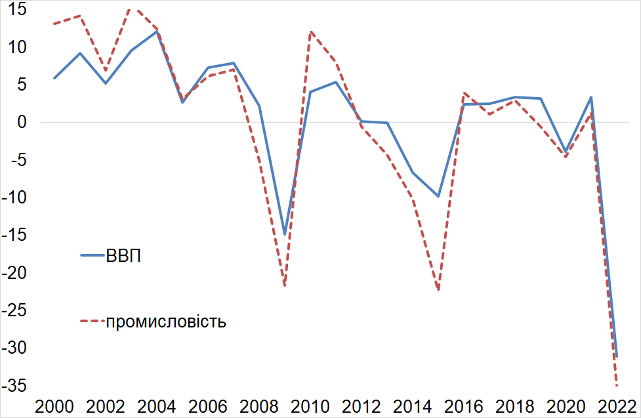
GDP
Industry
On this background, the dynamics of industrial activity in Ukraine in recent years looks contradictory (diagram "Index of Industrial Production"). On the one hand, slow industrial growth was caused by the lack of structural changes. Although the losses in the coronavirus year of 2020 turned out to be moderate, expectations for a gradual recovery in 2021 did not come true. Note that industry determines the demand for transportation: the dynamics of freight traffic "lags behind" industrial production by 1-2 months (diagram "Growth of industry and freight turnover"). Hence, the accelerated recovery of industry contributes to the development of transport.
On the other hand, the threat of Russian aggression was underestimated, with the associated neglect of the needs of defence orders, which might be a significant factor of industry growth. Meanwhile, proper account of external threats may be an efficient factor in economic growth, including production of military equipment and its sale on the international arms markets.
Industrial production index, June 2019 = 100
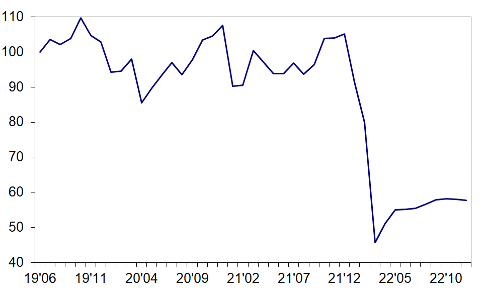
Growth of industry and freight turnover, % (cumulative) to the same period of the previous year
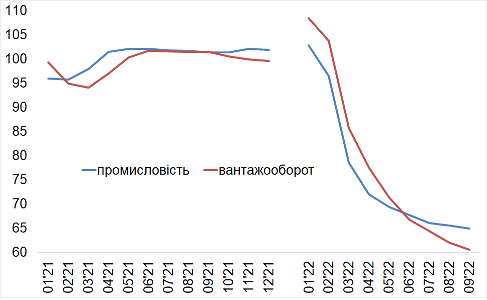
freight turnover. industry
In this context, the example of South Korea is instructive: aware of the new growing threats from its "northern neighbour" (including the possibility of using nuclear weapons), it since early 2000s has been promoting industrial production with an emphasis on innovation and technologies, including production of weapons and security systems, which gave the country an opportunity to boost its presence in the arms markets from year to year (diagram "Processing industries ... of South Korea"). Even in the year of the coronavirus crisis, its arms sales remained high.
Manufacturing industries in the GDP structure (% of GDP) and arms sales* of South Korea
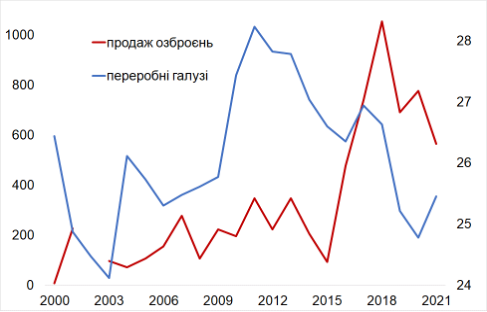
arms sales
manufacturing industries
Ukraine’s arms sales*
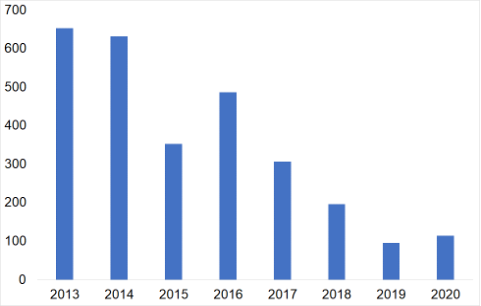
* - arms sales are presented in SIPRI TIV ml units, corresponding to $ million.
Unfortunately, it should be admitted that Ukraine has lost the production potential of the country's defence industry in recent years. This was demonstrated not even by the decrease in arms sales on foreign markets (diagram "Ukraine’s arms sales") but by the acute shortage of domestic weapons in the first weeks of Russian aggression. Only thanks to the partners’ help, the situation gradually improved. However, strategically, it will be extremely difficult to ensure the proper level of security for the country without domestic production of competitive equipment.
So, today, at the beginning of the recovery process, it is important not to repeat our mistakes of the pre-war years. Without a doubt, Russia will remain a threat to Ukraine for years to come. This requires "synchronous" significant acceleration of the economy and strengthening of the security sector. These goals meet in the defence industry, tasked to produce (on its own and/or in cooperation with foreign companies) the widest possible range of weapons, with which it is quite possible to defend the country and strengthen the eastern outpost of the European Union, on the one hand, and to find a promising export niche in one of the most economically profitable sectors, on the other.
https://razumkov.org.ua/statti/pro-priorytety-u-promyslovosti




